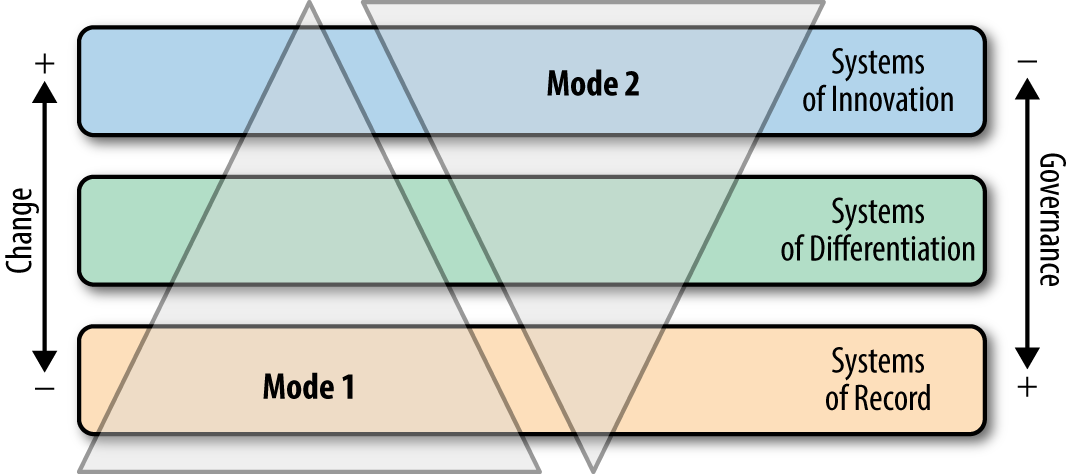Chapter 3. Service Virtualization in a Bimodal IT World
In 2014, Gartner published a new practice model for organizations that deliver software: bimodal IT. In short, an organization that follows the bimodal IT practice adopts two separate styles (modes) of software development and delivery:
- Mode 1—also known as reliability mode—is focused on predictability. This involves development projects that are related to core system maintenance, stability, and efficiency. These projects generally require little business involvement and are often organized in a traditional, sequential manner.
- Mode 2—or agility mode—focuses on innovation and differentiation. This involves finding solutions for new problems and exploration of areas of uncertainty. These projects generally require a high level of business involvement and are often organized in an incremental, short-cycled, Agile method of working.
Figure 3-1 shows an overview of what bimodal IT entails.
Mode 1 is mostly targeting systems of record—systems that store information, often both current and historical, and that are used to keep the daily business running. Mode 2, on the other hand, is mainly focusing on systems of innovation—systems that are meant to provide an organization with an edge over their competition.

Figure 3-1. A bimodal IT approach
In this chapter, we take a look at the role service virtualization can play in software ...
Get Service Virtualization now with the O’Reilly learning platform.
O’Reilly members experience books, live events, courses curated by job role, and more from O’Reilly and nearly 200 top publishers.

